
Homemade Cultured Butter (European-Style Butter)
Cultured butter is made from cream that has been lightly fermented with live cultures. This fermenting process adds a light tangy taste to the butter.
Ingredients
- 500 ml heavy cream
- 50 grams unflavoured yogurt with live cultures
- unrefined salt
Instructions
- Pour the cream into a bowl and add in yogurt. Stir it together, cover the bowl and let it sit to ferment at room temperature for 36 hours, or up to 48 hours.Once the cream has fermented, it should smell lightly tangy. It may have formed a thick cream layer on the top, but don’t worry. This will all get mixed in.
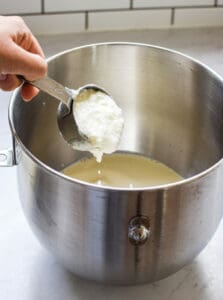
- Now use a mixer or a food processor to whisk the cream until it thickens. It will thicken, then become grainy. Keep on mixing and soon the yellow clumps of butter will form.This part can get a bit messy, especially as the butter starts to split from the buttermilk. If your mixer has a splash guard, use that.
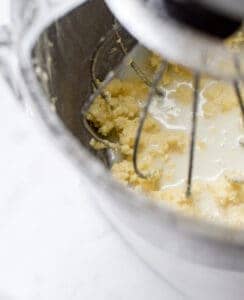
- Once the butter has formed, pour the mixture into a colander that's balanced over a bowl to strain out the buttermilk. Save the buttermilk for future baking.Place the butter clumps back into the mixing bowl and whisk it again, or use your hands to squeeze and knead the butter to remove more buttermilk.

- Now rinse the remaining butter in the colander under cold water, then pop it into a bowl of ice cold water. Use your hands to squeeze and knead the butter to remove the remaining buttermilk.
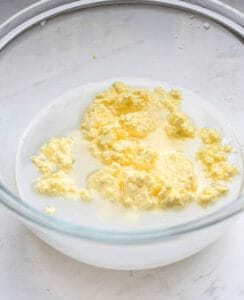
- Refresh the cold water and keep repeating this process until the water in the bowl is clean. Ensure the water stays cold through out this process by adding ice cubes as needed.If you’ve got wooden butter paddles, place them in the freezer to cool, or use wooden spoons instead.Then, put the butter on a clean bench. If you are working in a very warm environment, it’s helpful to work on a marble or stone board that can be chilled in the fridge or rubbed with ice blocks before using.
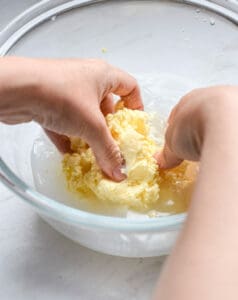
Salting the butter
- If you want to add a bit of salt to the butter for flavour, weight the ball of butter first. Then, flatten it out on the bench and sprinkle over a little unrefined salt. Around 1.5% percent of the total butter weight.Fold the butter over itself a few times to incorporate the salt. If the butter has warmed too much, place it in the fridge and let it chill.
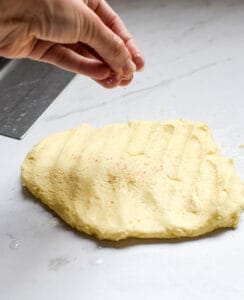
- Now use, the cold butter paddles or wooden spoons to flatten and squash the butter, over and over again. This removes those last remaining drops of buttermilk.
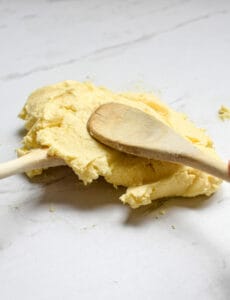
- Use paddles or spoons to shape the butter into blocks, or just put the butter onto some parchment paper and wrap it up tight.The butter can also be portioned and frozen for later use.
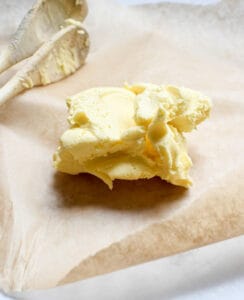
Nutrition
Calories: 176kcalCarbohydrates: 2gProtein: 1gFat: 19gSaturated Fat: 12gCholesterol: 69mgSodium: 21mgPotassium: 45mgSugar: 1gVitamin A: 735IUVitamin C: 1mgCalcium: 39mg
Tried this recipe?Let us know how it was!